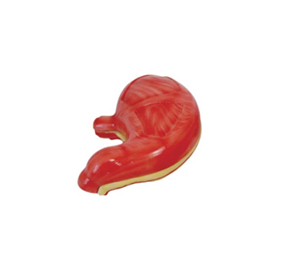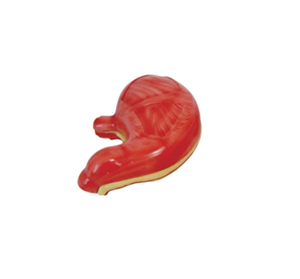In the process of medical learning, anatomy is a crucial basic discipline, and the anatomy of the stomach is one of the key contents of clinical medicine and the diagnosis and treatment of digestive system diseases. Traditional learning methods rely mainly on books, anatomical maps or autopsies, but these methods are often difficult to understand and lack of spatial sense. Therefore, as an intuitive and three-dimensional teaching tool, gastric anatomical model is becoming an important auxiliary means of medical education.
Industry expert opinion: Why anatomical models of the stomach are essential tools for medical growth
Experts from the American Medical Education Association (AAMC) pointed out that when learning anatomy, it is often difficult to form a clear spatial concept by relying only on books and two-dimensional pictures, and the use of three-dimensional anatomical models can significantly improve learning efficiency, so that students can more intuitively understand the shape, location and adjacent structures of organs.

Dr. John Peterson, professor of anatomy, said that especially in the study of the structure of the stomach, the model can help students grasp the relationship between the cardia, fundus, stomach body, gastric antrum, pylorus and other important areas , and understand the hierarchy of the stomach wall (mucosal layer, muscular layer, serosal layer). This has a profound impact on the subsequent clinical application.
In addition, an instructional study by the Royal Society of Medicine (RSM) showed that medical students who used a anatomical model in combination with traditional learning improved their recognition of stomach structures by 35% and performed better in case analysis and surgical planning courses.
Data Support: How can model learning help medicine grow?
Research data showed that students who learned using anatomical models performed significantly better on exams and in clinical applications than students who relied solely on books. For example:
Anatomy test scores IMPROVED : A study in the journal Anatomical Sciences Education shows that students who use anatomical models to aid their learning have scored an average of 20 percent higher on anatomy tests .
Improve spatial cognition : A study by the National Institute of Neuroanatomy Research found that medical students improved their understanding of the spatial structure of the digestive system by 40% after using anatomical models. In particular, he performed better in surgical anatomy and diagnostic imaging courses.
- Enhanced clinical decision-making : Clinical training data from Mayo Clinic shows that when participating in simulated surgical training, 70% of medical students believe that anatomical models help them better understand the surgical path for digestive diseases , especially in the planning of operations such as gastric ulcers and gastric resection.
Practical application of gastric anatomical model: How to help medical learning and clinical practice?
1. Accurate grasp of stomach anatomy
- The stomach is an important organ of the digestive system, closely related to the esophagus, duodenum, pancreas, liver and other structures. Through the model, different parts of the stomach can be visually displayed, helping students to clearly understand its form and function.
2. Strengthen disease understanding and improve diagnostic ability
- In the course of digestive system, the anatomical model of the stomach can be used to simulate the pathological changes of diseases such as gastric ulcer, gastric cancer, pyloric stenosis, etc. to help students more intuitively understand the anatomical basis and pathogenesis of diseases.
3. Improve surgical planning ability
- In surgical training, the stomach model can be used to demonstrate common operations such as gastrectomy, gastric bypass surgery, and gastrostomy , helping students to familiarize themselves with the surgical path in advance and improve their practical operation ability.
4. Combine modern technology to achieve immersive learning
- With the advancement of medical education, modern anatomical models are not limited to traditional physical models, but can also be combined with augmented reality (AR) and virtual reality (VR) technologies to enable students to conduct interactive learning in a virtual environment to further enhance the learning effect.
Future Vision: How can medical education be more Efficient?
With the development of precision medicine, 3D printing, virtual anatomy and other technologies, medical education in the future will rely more on intuitive, interactive learning tools. The stomach anatomy model can not only help medical students lay a solid foundation, but also help future clinicians to more accurately apply anatomical knowledge in diagnosis, treatment and surgical operations .
The road to medicine is not limited to the classroom, the most efficient learning methods and accurate tools are the key to promote personal growth and enhance professional quality . For every medical student, the rational use of gastric anatomy model can not only help to master anatomical knowledge faster, but also lay a solid foundation for future clinical practice.

